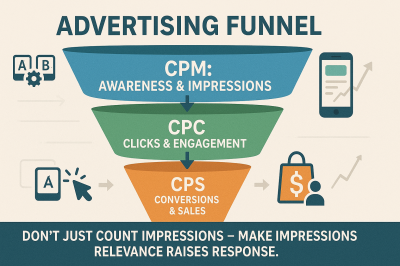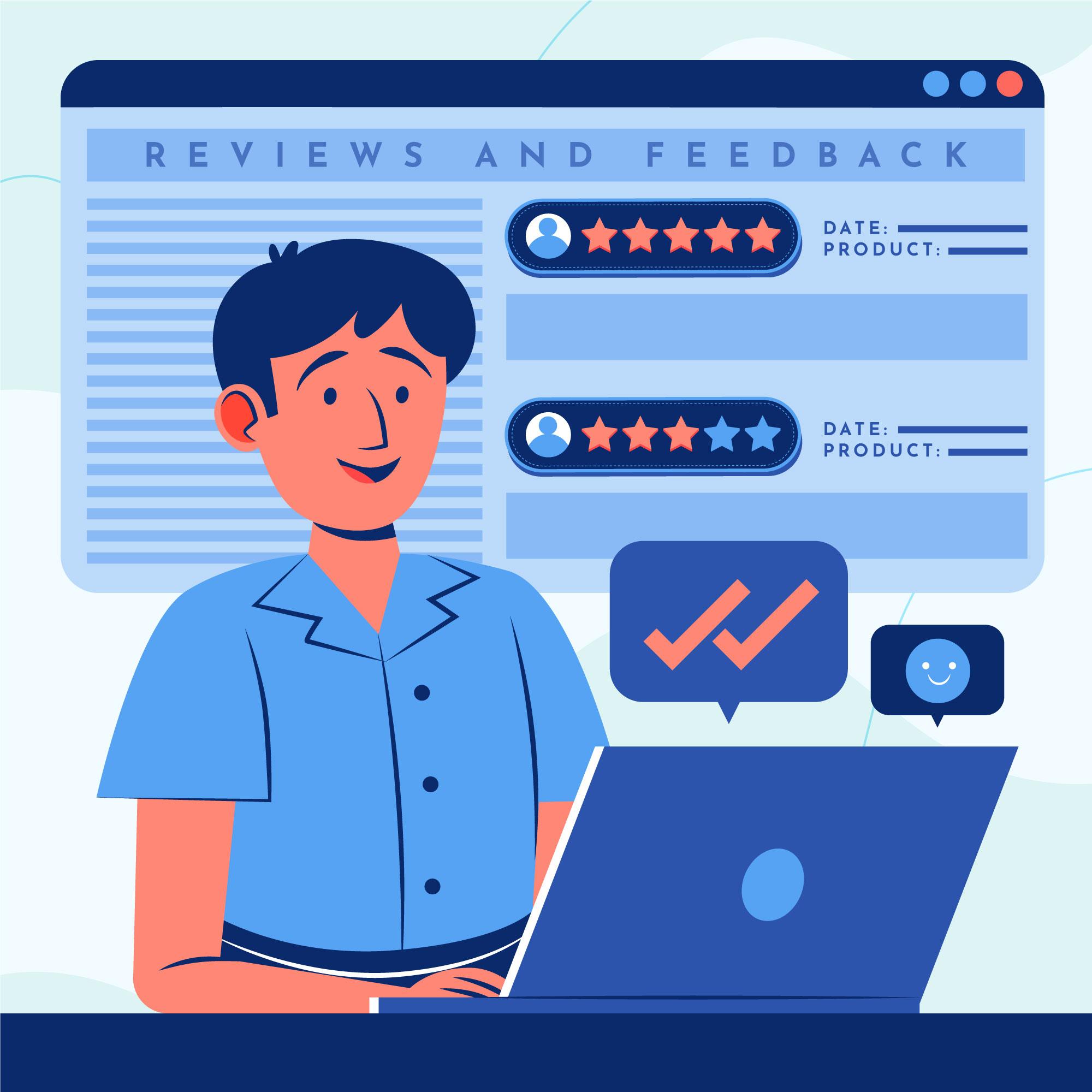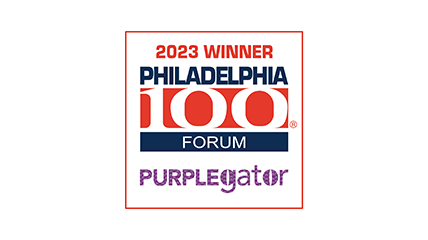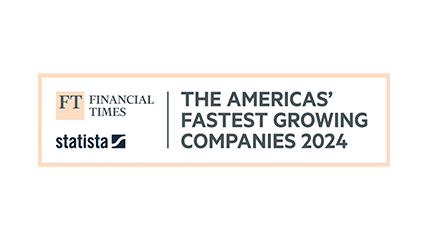Blog /
Why Relevance Raises Response—A Smarter Ad Playbook

What is CPC?
CPC stands for Cost Per Click, and it’s one of the most important metrics in digital advertising. I prefer to silo CPC as per click from a desktop computer and use CPT (cost per tap) from a mobile phone. After all, nobody truly “clicks” on a mobile phone, do they?
Regardless, CPC is what an advertiser pays every time someone clicks (or taps) on your ad. Not when they simply see it—only when they act on it.
Think of CPC like this: You’re not paying for eyeballs. You’re paying for engagement. And in a performance-driven world, that’s where the real value lies.
Let’s say you’re running a Google Ads campaign, and your ad appears 1,000 times but gets clicked on 50 times. If you invested $25, your CPC would be $0.50. That means each of those 50 visitors cost you fifty cents to bring to your website. Simple math, right?
Why does this matter? Because clicks are the gateway to conversions. And conversions—whether they’re sales, leads, or form fills—are the lifeblood of any good digital strategy.
But here’s the key: low CPC doesn’t always mean better. It’s also about relevant clicks. The more relevant your ad and landing page are to the user’s intent, the more likely they’ll convert. That’s why I always say: Relevance Raises Response.
So, don’t just chase cheap clicks. Chase smart clicks. That’s where the real ROI lives.
And in the end, let’s face it: it’s all about the money!
What is CPM?
CPM stands for Cost Per Mille—“mille” being Latin for 1,000. So, when someone says CPM, they’re talking about the investment required to show your ad 1,000 times. (Notice that I never say “cost” when it comes to advertising, because cost is a swear word in marketing. We only have investments when it comes to advertising.)
This is the model used most often for branding campaigns. You’re not necessarily paying for action—you’re paying for attention. Think of it like a digital billboard: it’s all about reach and frequency with reach being the total number of unique consumers you have reached and frequency being the average amount of times that you’ve reached them.
Frequency is so important when it comes to digital advertising as consumers rarely react after seeing a message the first time. The more times they see it, the more likely that they are going to become customers. It is for that reason that I’ve always said that I’d rather reach 1 person 10 times than reach 10 people 1 time each.
Let’s say your CPM is $10. That means you’re spending ten bucks to get your ad in front of 1,000 sets of eyeballs. The goal here? Saturate the market. Build awareness. Stay top of mind with a relevant audience that is most likely to buy your product or service.
But here’s the kicker—a cheap CPM doesn’t always mean value. If you’re buying $2 CPMs for the wrong audience, you’re not maximizing your return. That’s why I always tell my students and clients: Don’t just count impressions. Make impressions count.
And remember—if your creative message isn’t strong, if your targeting isn’t tight, even the best CPM won’t save a weak campaign. It’s not about how many people see your ad. It’s about how many of the right people remember it.
So, whether you’re running a brand awareness play or trying to tee up retargeting, CPM has its place. Just make sure the message is relevant—because as we know: Relevance Raises Response.
What is CPS?
CPS stands for Cost Per Sale, and this is where the rubber meets the road. Whether you call it CPS or CPA (cost per acquisition), it’s the metric that tells you exactly how much you’re paying to close the deal. Not for a click or tap. Not for an impression. For a sale. It’s the ultimate KPI. If all of your interim KPIs are met, but the ultimate KPI goal of sales is not met, I doubt the boss is going to agree to renew the campaign.
This is the holy grail for performance marketers. It’s pure ROI. If you invest $500 on ads and get 10 sales, your CPS is $50. That means every sale cost you fifty bucks to land. Now, I wish it was IPS (investment per sale), but I’ll have to live with CPS for now.
Let’s say that your CPS is $50 and you make $35 on each product you sell. Sounds like a loser, doesn’t it? Not so fast. If there is repeat business from that new customer, then. you need to calculate the lifetime value (LTV) of that initial sale. So, even though the CPS is greater than the profit, if that same consumer comes back to purchase more in the future, you’ve got a winning CPS in the long run.
CPS gives you total clarity. It’s not fuzzy like reach or engagement. It’s dollars in, dollars out. That’s why if you’re an e-commerce brand—or running any kind of direct-response campaign—this is your North Star.
But here’s what I tell clients all the time: you don’t lower CPS by slashing your ad spend. You lower CPS by increasing efficiency. That means tighter targeting, smarter creative, and a smoother funnel. From the first touch to the thank-you page, every step has to convert as effectively as possible.
And let’s not forget: not all sales are created equal. If you’re selling a $20 widget, a $15 CPS might not fly. But if you’re closing a $5,000 deal? That’s a steal. Context matters.
So, track CPS like a hawk. Because in the end, it’s not about vanity metrics—it’s about results and sales is the only result that the boss really cares about. And as always, say it with me: Relevance Raises Response.
How does a small to medium sized business improve these stats?
I like to break it down with KPIs and goals. Start with the ultimate KPI which is almost always the same thing — sales. If you are investing $1000 in marketing, what do you need in incremental sales for the boss to be satisfied? If you are getting a 150% return on your investment, then we will be happy with $150 profit. Remember, however, you can’t simply compare the marketing investment to gross sales. You need to be comparing net sales which is gross sales less the cost of goods sold (COGS) to match against the marketing investment.
Now that we know the ultimate KPI goal is a net sales goal, we can identify a variety of interim KPIs and goals that we know from experience can lead us to the promised land of meeting and exceeding that net sales goal KPI.
There are so many things that we can do as a small business owner to improve each of the interim KPIs and goals that will help us to reach our ultimate sales goal. Let’s say you want to improve the CPC. You could experiment with changing the image, the offer, or the copy on the ad. Always do A/B testing to determine the best way forward. Testing is the beauty of digital marketing. We get so much data that can be used to continually enhance results. If you are not using that data, you need to hire somebody who will. With digital, you should get better each week as you begin to acquire statistically accurate data.
If you’re only watching the last step of the journey (sales), you’re flying blind through the rest of the campaign. That’s where interim KPIs come into play. Watch the whole funnel, optimize it, and remember—the more relevant each touchpoint, the higher the final response.
How are they calculated?
Keep stats from the beginning to the end of the campaign. Look at each calendar month individually to continually improve those interim KPI statistics. Make changes. Experiment. Don’t ever “set it and forget it.”
What tips do you have for utilizing these stats or improving them in online advertising?
A/B test everything: headlines, images, CTAs, audience segments, landing pages. But always test one variable at a time. Otherwise, you won’t know what’s moving the needle. Keep detailed records of each experiment.
If your CPS is too high, look at the interim KPIs like CTR, bounce rate, or engagement. Improve those, and conversions will often follow.
You can have a killer ad, but if the landing page sucks? Game over. High bounce rate = disconnect. Test everything: load speed, mobile UX, clarity of CTA, relevance to ad copy.
Every KPI is influenced by mobile experience. Make sure ads and landing pages load fast, look great vertically, and are thumb-friendly.
Make KPI review a weekly habit. Set benchmarks. Track trends. When numbers dip—ask why. When they soar—document what worked.
Mobile and digital advertising is never done; it just keeps improving. If you’re doing it right.
About the Author

Bob Bentz is president of marketing agency Purplegator. He is also an adjunct professor who has taught at the graduate level at the University of Denver and at West Virginia University for the past 11 years. Bob is the author of Relevance Raises Response: How to Engage and Acquire with Mobile Marketing (SECOND EDITION) which is available at Amazon and other fine online book stores.







